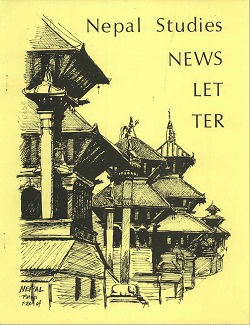Author Biography
Alton C. Byers, Ph.D. is a mountain geographer, conservationist, and mountaineer specializing in applied research, high altitude ecosystems, climate change, and integrated conservation and development programs. He received his doctorate from the University of Colorado in 1987, focusing on landscape change, soil erosion, and vegetation dynamics in the Sagarmatha National Park. Between 1990 and 2015 he worked for The Mountain Institute in the Himalayas, Andes, and Appalachians, and in 2015 joined the Institute for Arctic and Alpine Research (INSTAAR) at the University of Colorado at Boulder as Senior Research Associate and Faculty.
Elizabeth Byers, M.S. is a Senior Scientist with the West Virginia Department of Environmental Protection and the principal of Appalachian Ecology, an environmental consulting firm. Ms. Byers has a B.A. magna cum laude in geology from Brown University, an M.S. in hydrology from New Mexico Tech, and has completed additional graduate work in ecology at Oregon State University. Ms. Byers has 30 years of experience working on natural resource projects in the Himalayas, East African rift, Rocky Mountains, and Appalachians.
Milan Shrestha, Ph.D. is Assistant Research Professor and Senior Sustainability Scientist with School of Sustainability at Arizona State University. He is an environmental anthropologist with a background in smallholder agriculture and food systems, international development and geospatial analysis. His current research projects include climate change risks and vulnerability in mountains, urban-rural linkages of land system change, and societal transitions to green development.
Dambar Thapa, M.S. is a forester who worked at The Mountain Institute, Kathmandu, Nepal when the 2014 field research was conducted. He now works for The Partners Nepal, Kathmandu, Nepal.
Bidhya Sharma is a 2017-2018 recipient of the Chevening Awards 2017/2018 and recently completed her M.Sc. with distinction in wetland science and conservation at Bangor University, Wales.
Abstract
Around 2003, the highly valuable medicinal fungi Ophiocordyceps sinensis (Nepali: yartsa gunbu) began to be commercially harvested in the remote Barun valley of the Makalu-Barun National Park and Buffer Zone, eastern Nepal. Since then, an estimated 3,000 collectors per year have visited the valley each harvesting season, placing new pressures upon its subalpine and alpine landscapes. A review of the yartsa gunbu literature suggested that its harvesting throughout highland India, Nepal, Bhutan, and China has brought important economic benefits, but that it has often been accompanied by a corresponding increase in negative environmental impacts such as alpine shrub destruction, wildlife poaching, and improper garbage disposal. Adverse social impacts reported have included an increase in violence, occasional murder, and the erosion of traditional values. In an attempt to determine if similar phenomena were occurring within the Barun valley, east Nepal, we conducted a month-long study of yartsa gunbu harvesting practices between May and June of 2016. Unlike other regions of the Himalaya, we found that violence and social unrest due to harvesting competition were unheard of in the Barun, which we link to the (a) lower market value of yartsa gunbu harvested there when compared to other regions, and (b) the recognized role of yartsa gunbu as a supplemental and livelihood diversifying income generation opportunity instead of a sole source of new income. Since its collection and sale were legalized by the Government of Nepal in 2001, the concurrent development of locally responsive yartsa gunbu harvesting policies and practices can also be linked to the general absence of environmental disturbance that we found.
Acknowledgements
The authors gratefully acknowledge the National Geographic Society for its generous support of two field seasons of research in the Barun valley. The authors would also like to thank The Mountain Institute, Kathmandu, Nepal; Department of National Parks and Wildlife Conservation, Kathmandu, Nepal; and Himalayan Research Expeditions, Kathmandu, Nepal for their interest in and support of our work through the years. We appreciated the comments of two anonymous reviewers who provided valuable suggestions for the paper’s improvement. Sincere appreciation is extended to the many local harvesters, lodge owners, livestock herders, and government staff who generously shared their expert local knowledge to make this study possible. Mr. Rakesh Kayastha, Kathmandu University, is thanked for providing the place map.
Creative Commons License

This work is licensed under a Creative Commons Attribution-Noncommercial-No Derivative Works 4.0 License.
Recommended Citation
Byers, Alton C.; Byers, Elizabeth; Shrestha, Milan; Thapa, Dambar; and Sharma, Bidhya. 2020. Impacts of Yartsa Gunbu Harvesting on Alpine Ecosystems in the Barun Valley, Makalu-Barun National Park, Nepal. HIMALAYA 39(2).
Available at:
https://digitalcommons.macalester.edu/himalaya/vol39/iss2/8


